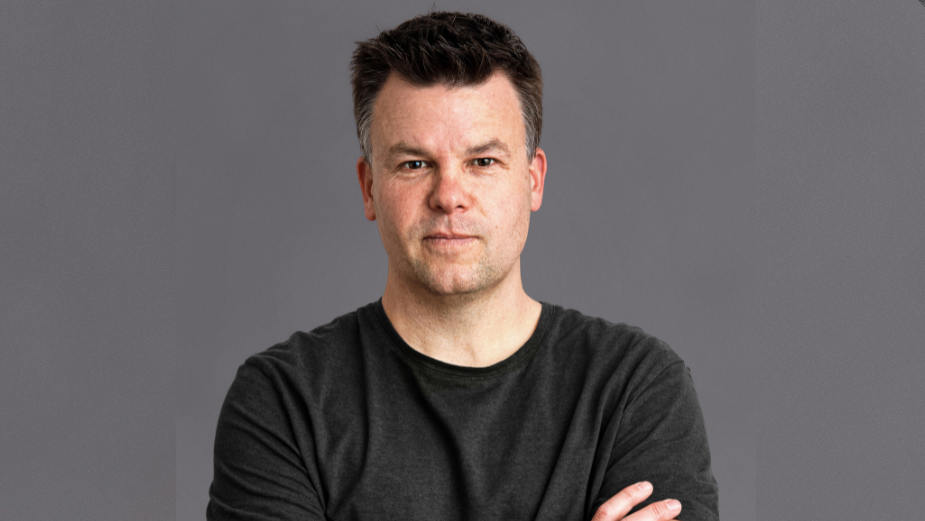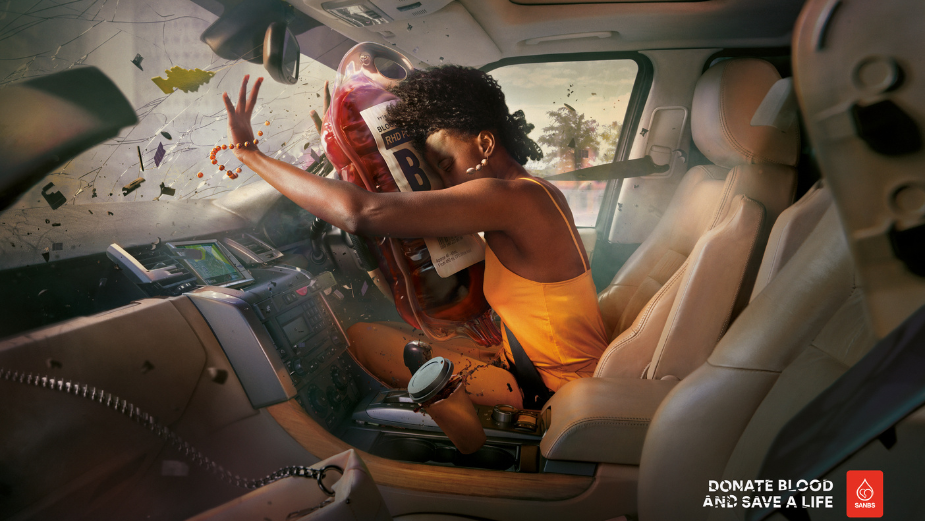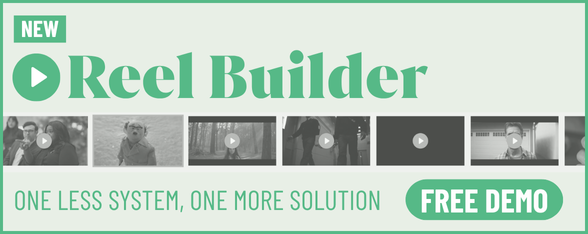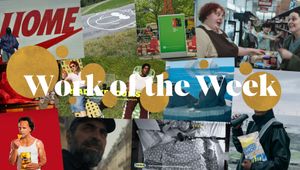
Brendan Hoffmann’s ‘Little Cardboard Houses’ Turned Into Adland Dreams

Cape Town-based creative Brendan Hoffmann wasn’t initially interested in a career in advertising. Embarking on civil engineering at university, it was halfway through his first year when he asked his lecturer when they’d get to “the part of the course where we start making the ‘little cardboard houses’.” When he realised that would be the seven-year slog of architecture, an art director was formed.
Brendan started out his career in advertising at Joe Public in 2005 and has since worked across various brands – PSG, Nedgroup, Sanlam, Martell Cognac, Chivas Regal, Emirates, Ponds, Red Bull, Nando's, McDonald’s, Unilever, Wrigleys and Honda, to name but a few – and agencies, with his last role being at Publicis Machine Cape Town as group creative director.
In 2020, with over 10 years of experience under his belt, he returned to Joe Public in Cape Town, where he now leads the team as an executive creative director. LBB’s Nisna Mahtani spoke to Brendan to hear more about his journey.
LBB> What does ‘creativity’ mean to you?
Brendan> For me, creativity is quite simply the act of starting with nothing and bringing something new into the world that didn’t exist before, preferably something intriguing, interesting, or entertaining. Creative people are makers and the originality of what they make is important to how creative they are perceived. Being ‘creative’ doesn’t mean you have to invent everything from scratch, combining found techniques and styles together in new and exciting ways can be equally as creative.
LBB> When did you first tap into your own creativity and how did this transpire in your younger years?
Brendan> I loved art growing up. Drawing and painting but also model building, making LEGO creations, puzzles and most things that involved making something that looked cool and made people smile. But I also grew up in a generation where we’d spend a lot of time, extremely bored. Like a 10-hour car trip bored! With no iPad to play on, I’d fill this time making up stories in my head. Storytelling was an escape from the monotony of life. I wasn’t much of a writer, so these stories would be shared verbally with anyone who would listen and, based on the response, I would then adapt the stories accordingly for the next unsuspecting audience.
LBB> Did you always know the advertising industry was for you? When did you first discover its existence and how did your journey begin from there?
Brendan> Not at all. After school, I thought I was going to be a civil engineer and started studying that at university. That was until one day, halfway through the first year, I asked my lecturer when we’d get to the part of the course where we start making the ‘little cardboard houses’. His response was, “That’s architecture and it’s a seven-year degree.” Seven years seemed a bit long so I went looking for an option for my logical problem solving, creative brain.
The solution came in a three-year art direction degree at an ad school fittingly called the Red and Yellow School of Logic and Magic. So to be honest, the first time I thought about what ads were or where they came from was while putting together my application portfolio for Red and Yellow.
LBB> You started out as an art director, working across many agencies in South Africa such as DDB and Publicis Machine. Were there any lessons you learned in those initial days that you still carry?
Brendan> Soon after starting my first job I realised that I had a knack for print advertising. I had this book called ‘Creative Advertising’ that broke down systematically all the different types of print ads. The wordless analogy, the visual pun, the long copy ad. I realised that no matter what the product was, there was a way to tell a story about it that entertained the viewer and allowed them to be part of the experience by creating a simple puzzle that the viewer had to complete. In doing so, they felt rewarded. The, ‘Oh, I get it!’ moment plants your client’s brand into their memory so that the next time they go shopping, your ad pops into their mind. The trick is not to make the puzzle too complicated to understand but also not too easy that there is no reward. All my early successes at awards shows came from using this principle. I soon started to use this same principle to create radio, TV, ambient and social media ads.
Another thing I learnt was that great ideas don’t come from the smartest person in an agency, they come from the person who’s prepared to tirelessly work through all the not-so-great ideas until they find that gem. Many nights were filled covering our office wall with post-it notes until we eventually stumbled upon a great idea.
LBB> Where do you find your inspiration? Are there any particular pieces of work or people that impacted you?
Brendan> I won’t lie, I find award shows very inspiring. In my early years, I’d know every creative and all their work, which made agency functions a bit uncomfortable for all involved. Nowadays I find a lot of inspiration in movies, TikTok, stand-up comedy, and anywhere that ‘insights’ exist. I drive my creative teams very hard to find insights when working on creative briefs. For me, a great insight is the secret to a strong ad campaign and great insights can come from anywhere and anyone. Everyone has their own definition of what an insight is. Mine is: Something you tell your mate at the bar and he responds with, “That is so true!” and then… “I never thought about that before.”
Over my career, I’ve always been very inspired by brands with strong insightful campaigns, Snickers’ ‘You’re Not Yourself When You’re Hungry’, Omo’s ‘Dirt is Good’, Marmite’s ‘You Either Love It Or You Hate It’, Ikea’s ‘Lamp’, Tide’s ‘It’s a Tide Ad’, anything from Burger King and more recently anything from Heinz.
LBB> How would you characterise your leadership style in your current role as executive creative director? What are you keen to get out of your team?
Brendan> I’d characterise my leadership style as nurturing through example. I have a lot of time to give to any creative with the drive to be great. I tend to push my teams at Joe Public Cape Town very hard to make every piece of work the best it can be and then to make some pieces of work really great. I am very passionate about creatives being ‘makers’ and have challenged every creative that has worked for me over the years to not only try and make the best work of their careers but also to make a lot of work. At the end of the day, that’s how they learn and become masters of their specific craft. No one learnt anything by sitting around wondering.

LBB> What are some of the big debates going on right now that you’re keeping up with? How do you think these will impact the industry going forward?
Brendan> I’m particularly interested in the transformation of the marketing industry globally. It feels like in South Africa we are a bit ahead of the curve as we have such a diverse country so the change has been happening for a longer time. We see members of our teams coming from a wide range of cultural, language, race and wealth groups. Globally in some of the Western countries, where this diversity is not as naturally prominent, I think it’s been a bit harder. The value of having a diverse team is huge not just in the ideas but also in the detail and craft of those ideas. At Joe Public, we see this as a huge opportunity for South Africa to lead the way in the ad industry and also in other creative fields like movies, television, music, art and literature.
LBB> When you aren’t sitting at your desk, how do you spend your time? Are there any hobbies or interests that keep you busy?
Brendan> I spend a lot of time chasing my kids around and getting stuck into their various hobbies. I see being a father as a second chance to be a kid so most weekends are spent playing sports and doing art or making LEGO.
Living in Cape Town with a mountain on our doorstep I have also become an avid trail runner.
LBB> If you could go back and give yourself one piece of advice, what would it be?
Brendan> Don’t be so sceptical of the older generation, there’s a lot you can learn from them.















